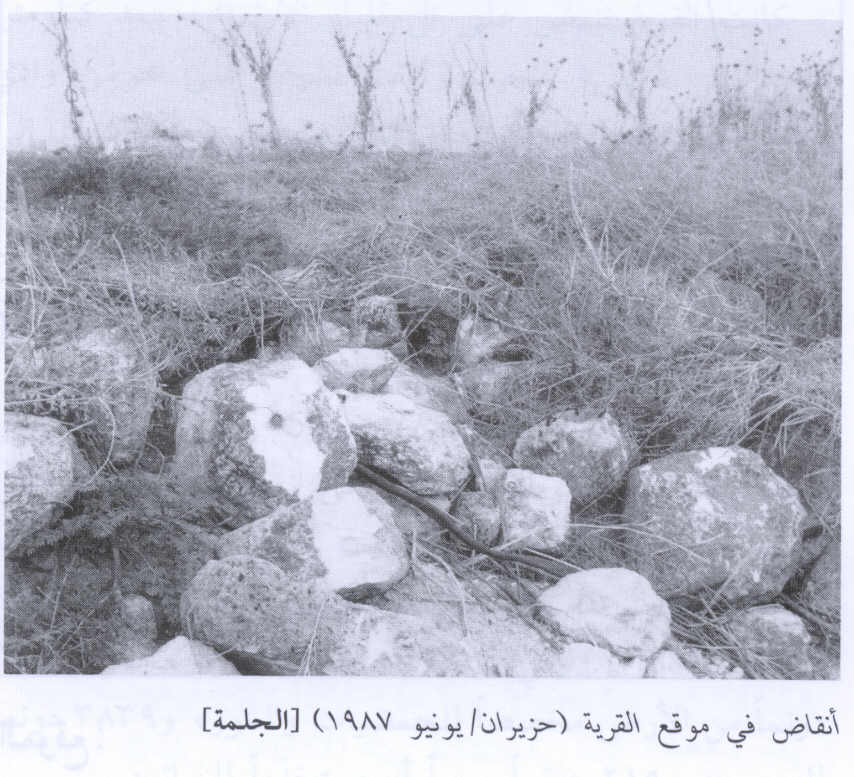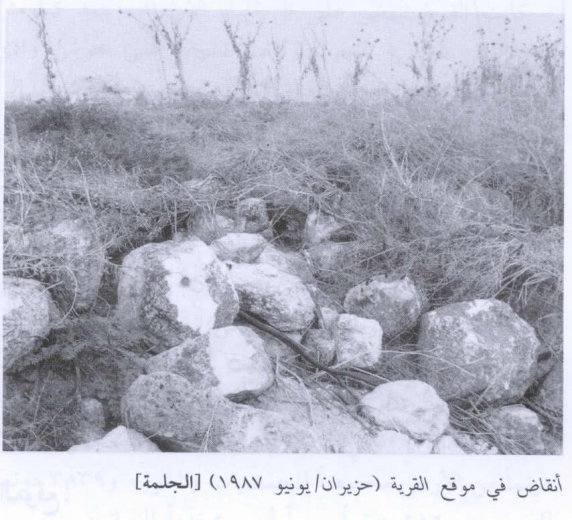Info
District: Tulkarm
Population 1948: 80
Occupation date: 01/05/1948
Jewish settlements on village/town land before 1948: None
Jewish settlements on village/town land after 1948: None
Background:
Before 1948:
The village stood on a small, low hill on the coastal plain, and overlooked the area known as Raml (“sand of”) Zayta, to the west. Al-Jalama was 3 km west of Tulkarm-Haifa highway and linked to it by a secondary road. It was about 1 km east of the Tulkarm-Haifa railway. TulKhirbat al-Jalama was known during the Crusader period as Gelenne.
The Mamluk sultan, Baybars, is said to have made a grant of the village land to his lieutenants in A.D 1265, dividing it equally among three amirs (military commanders).
The modern al-Jalama was originally a farm that belonged to the inhabitants of ‘Attil, who had settled on the farmland in the vicinity of their village. In 1922 the number of inhabitants was twenty-nine and grew to seventy by 1945.
The village was built on an archaeological site, with some of the ancient stones incorporated into the houses. Houses were closely clustered together at the center and relatively more spaced out at the periphery. The residents of the village were Muslims and they gathered their water from the local village well on the east bank of Wadi Jalama. Grain, vegetables, watermelons and oranges were grown on village lands.
Occupation and Depopulation:
The approximate date of the occupation of al-Jalama can be determined by examining the events of the surrounding villages. The nearby village of Qaqun was attacked in early March of 1948, but it was not occupied until three months later.
The History of the Haganah implies that by early May, Qaqun was the last village to remain unoccupied in this area, and it was wrestled from Iraqi forces in the following month.
Israeli Settlements on Village Lands:
There are no Israeli settlements on village lands. The settlement of Lahavot Chaviva was built in 1949 and is less than 0.5 km from the village site, currently is on the former land of the village Zayta (now the West Bank).
-----------------
Source: al-Khalidi, Walid (ed.). All that remains: the Palestinian villages occupied and depopulated by Israel in 1948. Washington DC: 1992.



